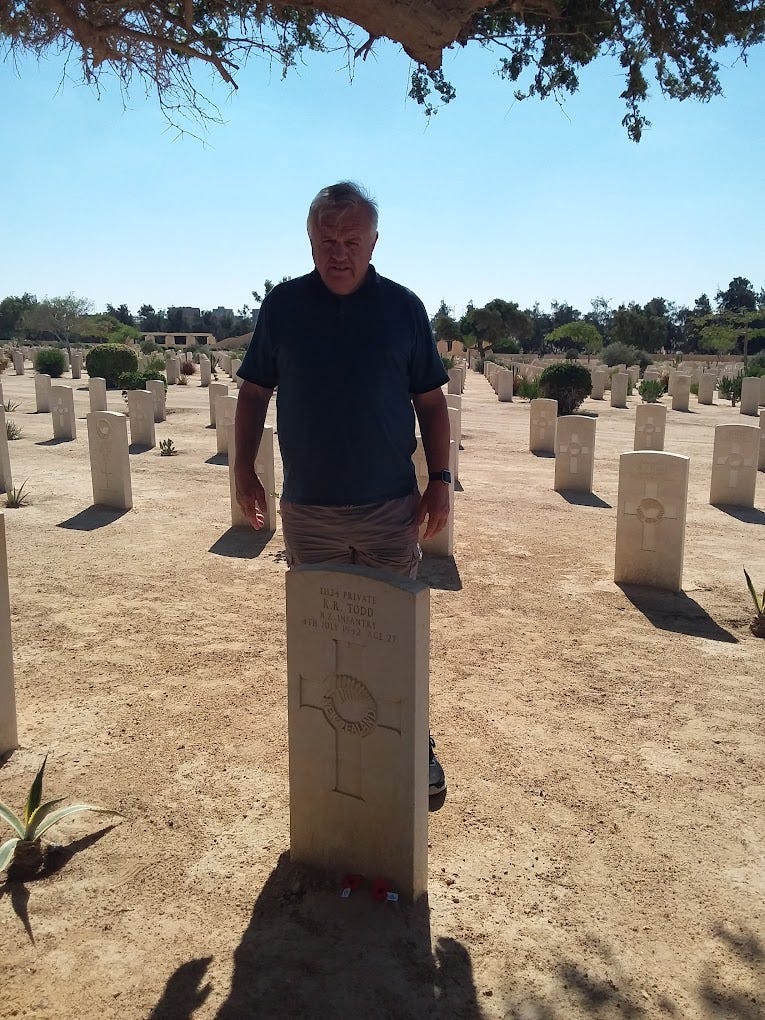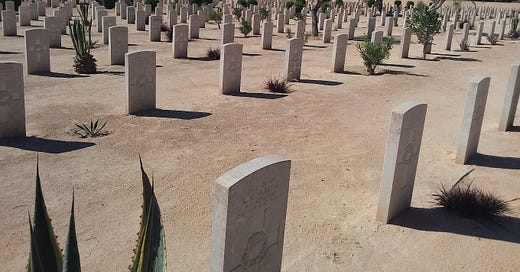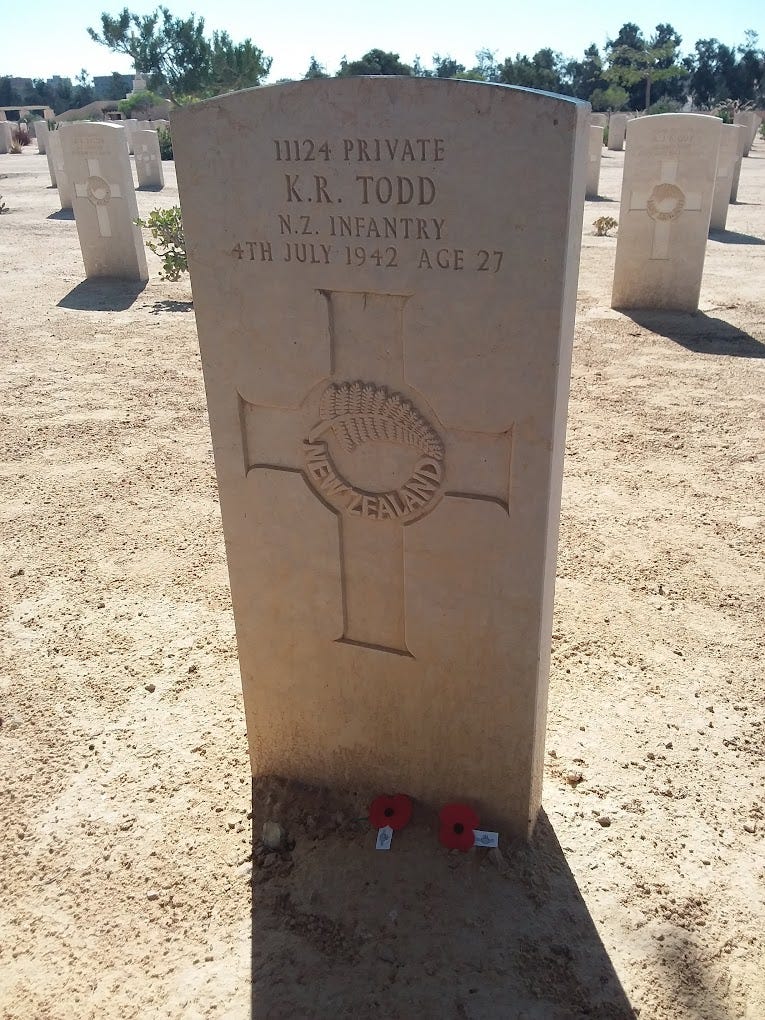Keeping the stories behind the names on War Memorials alive
"I hope the stories of the individuals who lost their lives are carried on down through the families and the links to the past are kept strong."
As another ANZAC Day approaches Invercargill-man Philip Todd is urging the younger generation to delve into the stories behind the names on war memorials to ensure the links to the past remain. Todd shares the story of his father and how he found his uncle’s grave on the other side of the world.
One of the things becoming more and more apparent to me as I approach my seventh decade is the number of links to our past that we are losing.
As a child in the 60s growing up in small town NZ everyone knew men who had returned from the first world war. Most of the second world war veterans were the day-to-day family men and workers of the town.
It was just the normality of the time we lived in.
As a child, we didn’t take much notice. I spent my time like other kids of the era making the most of our great outdoors and doing the stuff kids did back then.
Now and again, something would come along that would stick in your memory. While our father came from the coal mine area of Ohai, we lived our school years north of Dunedin at the coastal town of Waikouaiti.
On a trip south in the very early 60s we stayed in a house in the Waikiwi suburb and one morning our father and some of us children walked into town to have a look at the cenotaph where his brother Keith Todd is commemorated.
While probably being more interested in the hustle and bustle of being in a city, I still remember that walk quite well.
But it wasn’t until many years later that I grasped the full significance of what that must have meant to our father.
Dad had left NZ in early 1940 with the first lot of troop ships bound for the Middle East while Keith left not long after. But his group was diverted to the UK which was under threat of invasion by Germany.
After some time in the UK, all the Kiwi soldiers were transported to Egypt to form the NZ Division under General Freyberg which then served in Greece and Crete before returning to Egypt and the North African campaign.
I do know the two brothers bumped into each other in Greece but after Crete my father become a POW and they had no further contact with each other.
In this day of instant communication, it’s hard to wrap your thinking around how little contact people had back then.
My understanding is my father never knew Keith had died in North Africa until he was repatriated back to the UK in May 1945, some three years after Keith’s death in 1942.
The Todd family was a large family of 12 and Keith was Dad’s immediate older brother, so no doubt they would have been close.
My father died in 1966, an early death caused by his time as a POW in Europe. So apart from seeing the inscription in Invercargill, I don’t think he was aware of any further details of where Keith was eventually buried.
So, we decided to plan a holiday that incorporated a visit to the Commonwealth War Cemetery at El-Alamein in Northern Egypt where we knew Keith was buried. On November 7th we arrived at the cemetery.
We have visited several Commonwealth War Cemeteries on our travels over the years. The one thing they all have in common is they are extremely well looked after, but the El-Alamein cemetery is different.
It is on the northern edge of a desert and has no grass. The lines of headstones are laid out in the normal military-like precision.
We had taken some poppies from the Invercargill RSA to place on some of the headstones which we did, but the sheer scale of this cemetery is almost overwhelming.
A staff member showed us where Keith was buried and while that was sad enough, the lines and lines of headstones showing young Kiwi Soldiers was sobering.
The area has nothing in common with any part of New Zealand. And even with the easy methods of travel today it still feels a long way from New Zealand and especially the green hills of Western Southland.
The ages on the headstones showed young men from 20 years old up into their mid-30s. As someone who has lived close to 70 years, I can’t but help wonder how much they missed out on.
Most never married or had children, or the chance to have grandchildren. They never got to excel at a sport, never got to see their parents grow old and the multitude of other things the rest of us took for granted in our lives.
The overriding feeling I had was that it just wasn’t fair. And as you walked along the lines of headstones that feeling grew.
The potential those young men had was never realised because of a battle in a far-off desert, in a far-off country. Most had probably never travelled further than a few hundred miles from their homes before that
They missed out on so much of the post-war era which those who lived through still think it was the best years of life in New Zealand.

This is the second relations grave I have visited. I made a visit to great uncle Henry Tilson’s grave in the Somme Valley in northern France a few years ago. His death was equally as sad as he was killed in action just a few short days before the end of WW1.
The big difference was he is buried in one of the smaller war cemeteries with about 20 other Kiwi Soldiers.
The one positive you can always take away from visiting anyone of the Commonwealth War Graves across the world is the high standard of care they get, but I do think most of those buried would have much preferred to be able to live a long life and be buried closer to home.
There has been a steady growth in the numbers attending Anzac services around NZ over the last few years and I hope the stories of the individuals who lost their lives are carried on down through the families and the links to the past are kept strong.
We have seen some remarkable work done by Anne Robbie making sure all the war memorials from around Southland are preserved for future generations and I hope young people will one day look at the stories behind the names they contain.





